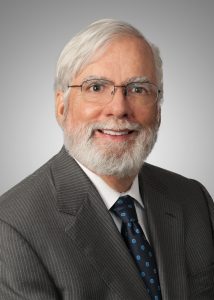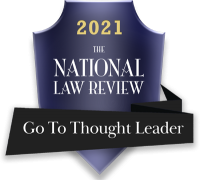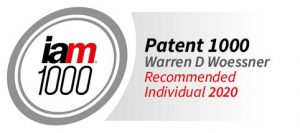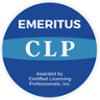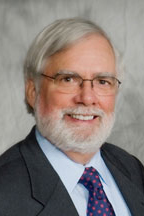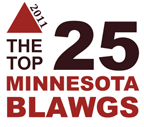On January 7th, the Patent Office released proposed revised s. 101 eligibility examination guidelines for public comment. The proposed Guidelines would supersede MPEP 2016.04(II), the section that controls the analysis conducted at step 2A of the Mayo/Alice test “to the extent it equates claims ‘reciting’ a judicial exception with claims ‘directed to’ a judicial exception….”I describe these exceptions as “PAIN”: Phenomena of Nature, Abstract Ideas and Natural Products, and they have visited much confusion and dismay to the examination of claims that incorporate them. These proposed Guidelines focus on the “Abstract Idea” exception and barely mention how they should be applied to Phenomena of Nation or Natural Products. This may be because Director Iancu is more comfortable with software/computer system technology, or it may be because the Director, being a California-based litigator more strongly relates to the cries for reform arising from the software industry. Nonetheless, the Guidelines represent an important step at clarifying application of the Mayo/Alice test, and all practitioners should read them and adjust their claim drafting approaches to reflect these revisions.
The Guidance begins by summarizing the well-known subgroups of abstract ideas: Mathematical concepts, Certain methods of organizing human activity and Mental processes. The lengthy footnotes that summarize the case law in these subgroups do not cite a single life sciences decision, except for Mayo – quoting Benson – and the Fed. Cir. “Ambry” decision (774 Fed. Cir. 755). In the latter case, the court invalidated Myriad’s method-for-screening claims as merely requiring comparing the sequence of the patient’s gene to the wild type gene and identifying any differences that arise. The Fed. Cir. noted that these were found to be abstract mental steps in its earlier Myriad decision. The isolation, hybridizing, amplifying and sequencing steps were dismissed as well-understood, routine and conventional. Thus, the subdivided claims failed Step 2B of the Mayo/Alice test.
The 2019 Guidance is intended to prevent claims reciting PAIN to fail Step 2A, and consequently to immunize them against Step 2B, that requires that the claims contain a further “inventive concept.” “These revised patent examination procedures are designed to more consistently and accurately identify claims that recite a practical application of a judicial exception (and thus are not ‘directed to’ a judicial exception)…”(emphasis added)
The primary revision is the division of Step 2A into two “prongs”. In the first prong, the Examiner must evaluate whether the claim recites a judicial exception. Footnote 20 states that the proposed guidelines “do not change the type of claim limitations that are considered to recite a law of nature or a natural phenomenon, including products of nature.” (emphasis added). In the second prong, a claim found to recite a judicial exception is evaluated to determine “whether the claim[s] recite additional elements that integrate the exception into a practical application of that exception.” If the answer is “yes”, the claim is patent- eligible and the Mayo/Alice inquiry stops. That’s right, no Step 2B for you!
Now the “practical application” analysis of the additional claim elements, taken individually or together, precedes and excludes the routine, conventional, well-known analysis of the same claim limitations. Also, Examiners are reminded that “additional elements refer to claim features, limitations, and/or steps that are recited in the claim beyond the identified judicial exception.” This is at least indirectly supportive of Judge Newman’s concurrence in Praxair Distrib., Inc. v Mallinckrodt Hosp. Products: “Discovery of previously unknown information may well lead to new and useful technology; and mental steps often are needed to move through a sequential process.” There is simply no law that prohibits a “thinking” step in a process claim. The entirety of the Guidance also seeks to effectuate Judge Bryson’s concurrence in Myriad that, “[a]s the first partly with knowledge of the [BRCA] gene sequences, Myriad was in an excellent position to claim applications of that knowledge” (689 F.3d at 1349). Such as by applying the knowledge to design a test for breast cancer based on mutations in the wild-type gene.
The question that remains incompletely answered is how whether or not the discovery of a practical utility for a naturally-occurring “correlation” meets the Guidance’s standards for providing a “practical application” of a natural phenomenon. In Genetic Technol. v. Meriel, LLC, claims to a method of detection of at least one coding region allele of a multi-allelic genetic locus via an amplification and detection step were found to be patent-ineligible. The detection step was characterized by the Fed. Cir. panel as “a mental process step—a routine comparison that can be performed by the human mind.” The other steps were dismissed as conventional, well-understood, etc. What stands out is Judge Dyk’s arguably dictum: “The inventive concept necessary at Step 2 cannot be furnished by the unpatentable law of nature (or natural phenomenon or abstract idea) itself. That is, under the Mayo/Alice framework, a claim directed to a newly-discovered [exception] cannot rely on the novelty of that discovery for the inventive concept necessary for [eligibility]; instead the application must provide something inventive, beyond mere ‘well-understood, routine, conventional activity.” (emphasis added)
In other words, Judge Dyk seems to be saying that the discovery of the utility of a natural correlation cannot support the patent eligibility of a claim “directed to” a PAIN. It has long been my opinion that there are correlations [noun] in nature, e.g., in vivo, but nature does not “correlate” [verb] anything; human scientists do that. Discoveries of the utility of biomarkers that indicate the presence of cancer and other pathologies are the foundation of modern diagnostic medicine. But note how Judge Dyke jumps from Step 2A, from a claim found to be directed to a newly-discovered phenomenon of nature to Step 2B. A claim directed to blood containing a high level of homocysteine and a low level of cobalamin is a claim directed to a natural phenomenon. A claim to a method of determining whether or not cobalamin is low in a sample based on the level of the biomarker homocysteine in the sample relies on the natural phenomenon but contains the additional steps of both measuring the level of homocysteine in a sample and concluding that cobalamin levels are normal or low. This is a practical application of a natural phenomenon and part of that application is the discovery that the recited correlation exists.
Has Director Iancu and his team decided that Judge Dyk’s inventive step requirement can be finessed by putting a “practical application” test into Step 2A, so that Step 2B will seldom be reached? This test would also protect method-of-medical treatment claims, such as those considered by the Fed. Cir. in Vanda. The petitioner for cert. is arguing that claims reciting a method of medical treatment are simply dressed up attempts to claim natural phenomena. I don’t think that this argument will succeed, but I wish that the Guidelines had spent more time differentiating a claim “reciting” a PAIN from a claim “directed to” a PAIN. Nonetheless, much printer ink will flow as we produce commentary and comments on this latest attempt to interpret the Mayo/Alice test.

